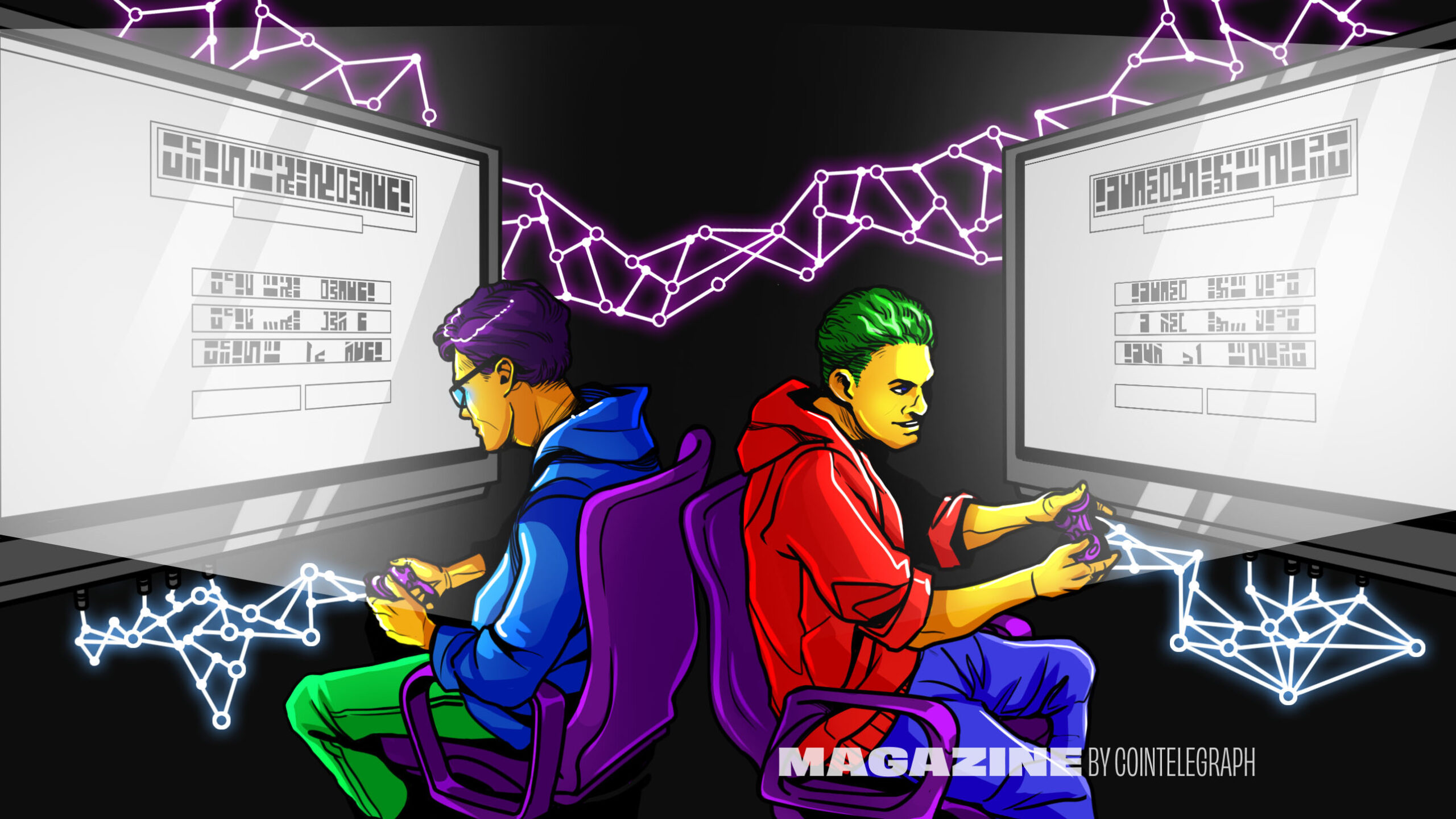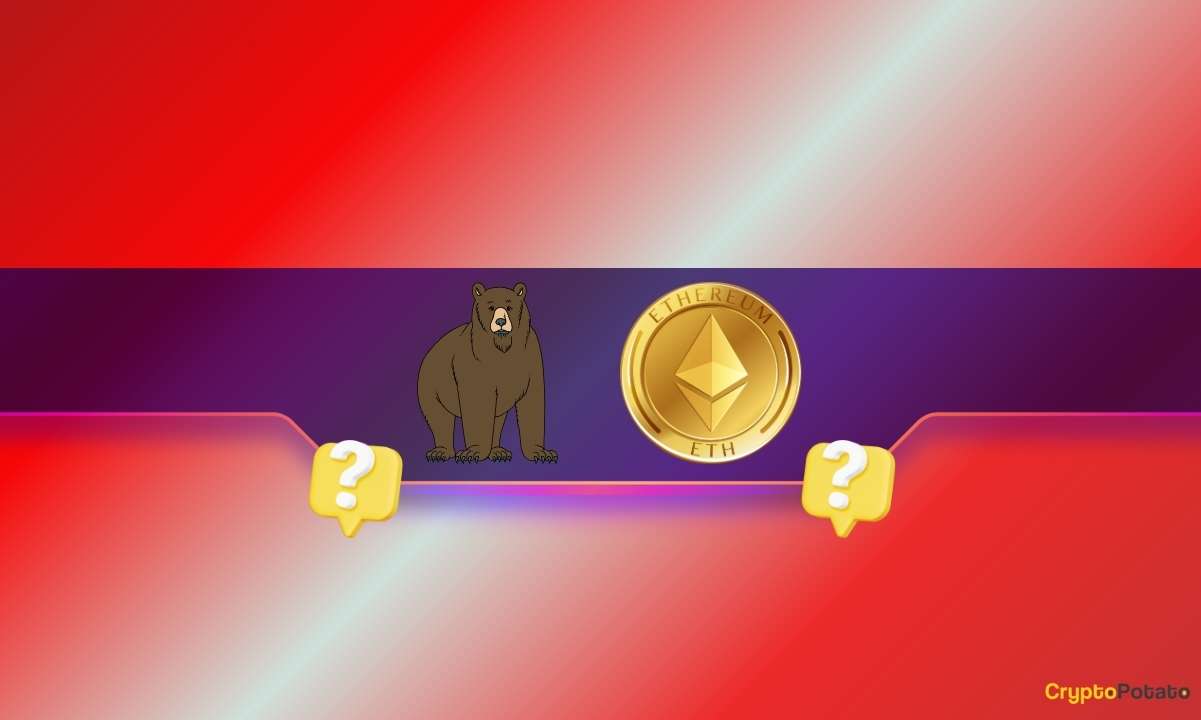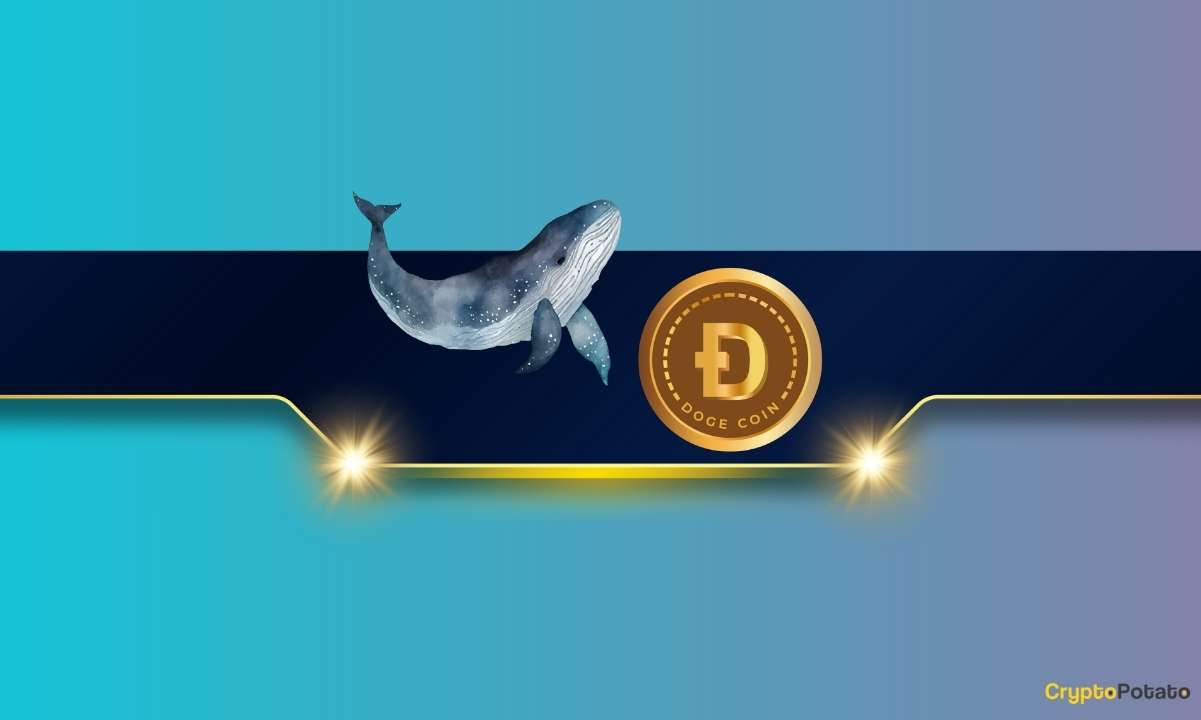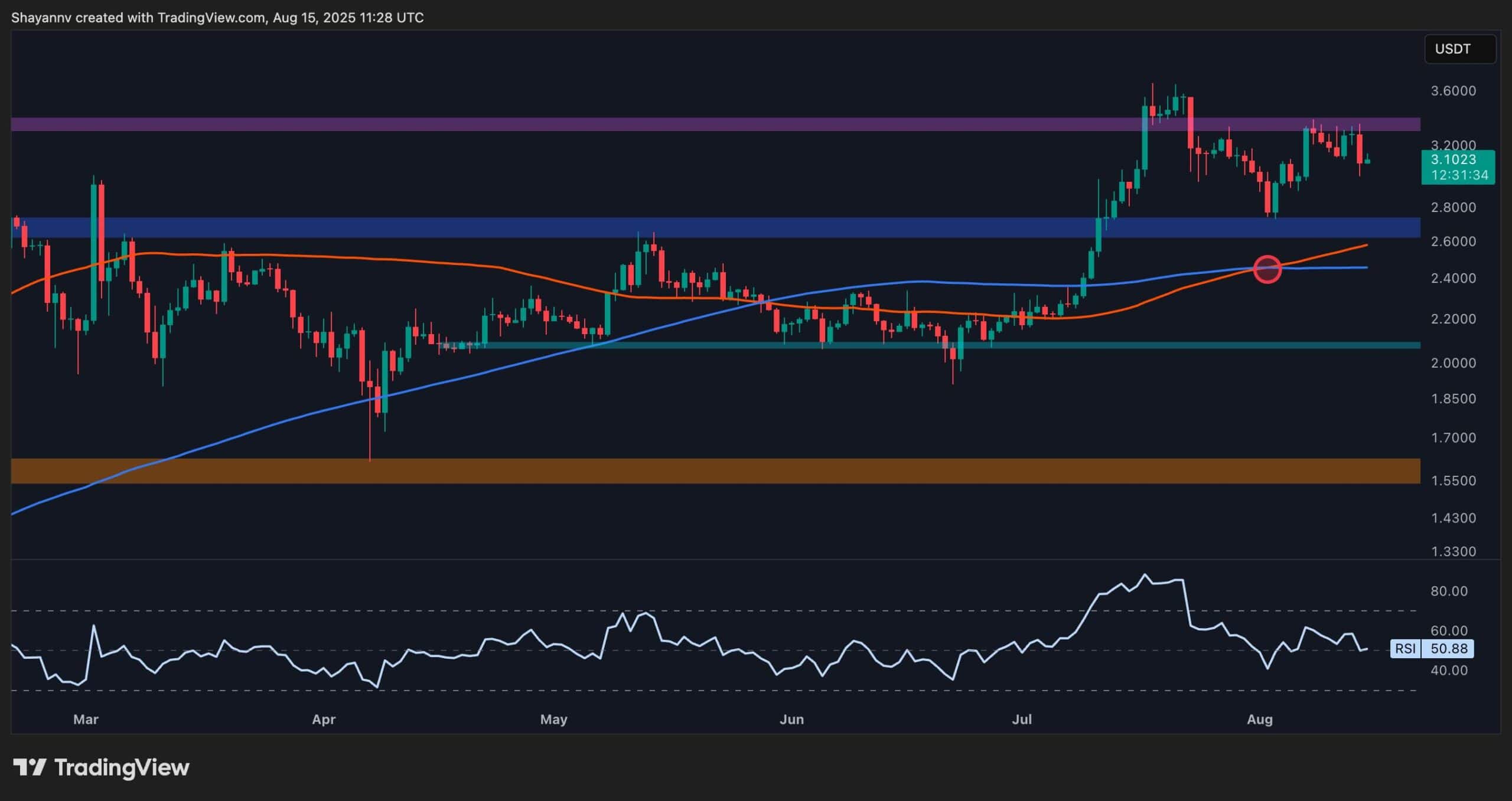Cryptocurrency
Is fully decentralized blockchain gaming even possible?

Despite promises of “decentralization” and “trustless ownership,” the vast majority of crypto games today are, at best, partially decentralized. Web3 is the branding, but in reality, most are “Web2+.” Game assets live on-chain, yet the game logic, state and storage remain off-chain on centralized servers.
Why? Simply put, it’s not easy to build a fully decentralized game on-chain. Blockchains in 2023 are still far too slow for processing the gargantuan number of transactions that video games require. Lattice CEO Ludens tells Cointelegraph:
“Building a fully on-chain game right now is a little bit like building video games on a computer from the 1980s. We don’t yet have complex on-chain games yet because the blockchains – even Layer 2s – are not powerful enough right now.”
Furthermore, developers have to make important tradeoffs when using blockchain technology to make the game widely accessible to non-crypto audiences.
For instance, Aurory’s developers created a hybrid inventory system called Syncspace, which allows players to leave their assets in Aurory’s custody, but move them into their Solana wallets if they wish.
“Syncspace is Aurory’s UX strategy,” Julien Pellet, Aurory’s infrastructure technical director, tells Magazine. “Not every player wants to handle the complexities of a crypto wallet. We accepted that tradeoff by building Syncspace and allowed some assets to live off-chain in order to bring Aurory to a wider audience of non-crypto-native Web2 players”
But there are passionate communities of degens interested in full-fat, on-chain “autonomous worlds” that are built from the bottom up by the players. One group even modded a game to form a communist collective so everyone “won” the same. Autonomous worlds, as they’re sometimes known, face a lot of hurdles, but given the limitations, the early results are impressive.

How Web3 games started
Web3 games are grappling with a bunch of other issues due to the brief history of the emerging sector. During the last crypto bull cycle, most blockchain games tried to be financial products first and video games second.
That strategy helped catapult the play-to-earn gaming sector into brief mainstream prominence when token prices were going up. But unfortunately, if the appeal is based on delivering a financial return, then enthusiasm can disappear fast when token prices take a dive.
Games like Axie Infinity, Pegaxy or Crabada, which once promised spectacular returns for players, have since fallen off a cliff. For Axie, unique active wallets peaked at around 700,000 in November 2021 but now tally more often in the eight to 10,000 range today.
The Metaverse Index (MVI) token, which tracks a collection of major gaming and metaverse tokens, is down 95.6% from its all-time high in November 2021.

In response, Web3 games are now shunning the “play-to-earn” catchphrase that helped propel the sector to prominence, embracing phrases like “play-and-earn” or “play-and-own,” and deemphasizing the profits while focusing on benefits such as the ownership of game assets, or simply how fun the game is.
“At the end of the day, the core focus of games should be leisure and entertainment, not delivering a financial return,” Aurory’s backend tech director Jonathan Tang tells Magazine.
“As Web3 game developers, our job is to think of how to leverage blockchain technology and what it brings to video gaming, while keeping the game fun as a priority.”
Some believe the emphasis on financial returns has tainted the industry’s image, not least due to an influx of scammers.
Pellet adds: “The last bull run attracted scammers that have multiple elaborate strategies such as cloned websites and fake projects to divert millions of dollars from legit players and teams. With Web2 games, it’s much harder to pull off those types of scams.”

Enter on-chain games
Encouragingly, however, a smaller community of builders interested in building autonomous worlds are trying to bring on-chain maximalism to blockchain games.
In contrast to their Web2.5 counterparts, fully on-chain games have their assets, and the game logic, state and storage live on-chain. The game state refers to the current status of the gaming world, such as player progression and the items they possess, while game logic simply refers to the rules of the game — how players move, interact, collect and consume.
Why bother with having it all on-chain? Doing so ensures the game’s state is always immutable and transparent on the blockchain. But most importantly, it opens the door to the same kind of open composability that is possible in DeFi and enables an aggregator like the 1inch Network to build on top of Uniswap or Curve to integrate Synthetix and allow for cross-asset swaps.
Composability allows anyone to build second-layer rules on top of the game’s original rules. Second-layer rules in fully on-chain games exist in the form of smart contracts on top of the core game developer’s original smart contracts. They are simultaneously experienced by all players in the game, unlike third-party mods in traditional gaming that simply alter the player’s local gaming experience.
Read also
Collective action
Take, for example, the on-chain RPG Dark Forest, built on the Gnosis chain in 2019 by pseudonymous creator Gubsheep. Dark Forest saw groups of players in their own DAO (DFDAO) creating permissionless guild systems through external smart contracts. With the guild system, small players were able to overcome collective action problems in competing against big whale players by pooling their own in-game resources together. As DFDAO put it in its blog:
“Someone needs to beat orden_gg. Orden_gg has won twice in a row and is at the top of the leaderboard as we speak. If we band together for a collective victory, we can defeat Dark Forest’s unofficial raid boss together.”

DFDAO co-founder toe knee told Magazine: “The Astral Colossus (guild) was a mini game ‘above’ the core DF contracts, but in the eyes of the DF core contract, it was just another player. Instead of being an EOA account like everyone else, it was a smart contract with custom logic that shaped how it would behave differently. This contract was non-upgradeable and verified so players could confirm for themselves that we couldn’t change the rules and we couldn’t keep their planets after they donated.”
Dark Forest players have also created their own in-game marketplaces or even forked the game entirely onto a different chain/layer 2 — Gnosis Optimism. The new game – Dark Forest Arena – introduced new gaming modes previously unavailable.

Communist take over
Or take another on-chain game, OPCraft, a Minecraft-inspired experiment built by the Lattice team on Optimism. Weeks into the launch of the game, one player, calling himself SupremeLeaderOP, created a “communist society” where any player that opted into the guild would give up all their resources and share them with every other player in the society.
These rules were not a social promise between players. They were binding and tied to an on-chain smart contract. SupremeLeaderOP could not, even if he so desired, rescind his promises to players or bend the rules of his communist guild. Some players saw the guild as a wacky fun experiment and immediately swore allegiance to the communist Republic, in the process, giving up all their in-game resources in return for access to the guild’s collective treasury. As documented on the Lattice blog:
“Once a player had become a comrade, they were able to — through smart contracts that the Supreme Leader had deployed — mine material for the government treasury and build using treasury material on top of government owned land! The Republic even had a ‘social credit’ system to prevent freeloading comrades from spending more material from the treasury than they have contributed. Free loading comrades were not allowed to build anymore until they had ‘repaired their social credit’ through contributing their labor.”
In fully on-chain games, players can implement innovative changes rather than having to wait for a core developer to introduce the updates through a centralized patch. It’s a level of bottom-up spontaneous creative expression that extends far beyond how we traditionally think of video gaming, but in the Web2 world, experimenters tinkering around on custom game mods eventually spawned billion-dollar game franchises such as Dota and Counter-Strike. Dota was first created permissionlessly as a mod on Blizzard’s Warcraft 3 game, while Counter-Strike was birthed from a mod on Valve’s Half-Life game.
The on-chain gaming space is nascent, and builders in this space still refer to fully on-chain games very differently. The popular autonomous worlds label was coined by Lattice Labs, but other builders in the on-chain space have referred to the concept as eternal games, infinite games or on-chain realities.
Although the terminology varies, the common denominator underlying these games is hard permanence on the blockchain. Just as smart contracts and tokens will forever exist on-chain, fully on-chain games remain fully uncensorable and alive long after a gaming studio abandons the game.
The tradeoff? Most on-chain crypto games currently resemble turn-based board games with simple game loops like Space Invaders and Pac-Man in the early era of video games.
Limitations, limitations, limitations
In creating the on-chain racing game Rhauscau, creator Stokarz tells Magazine he had to make a bunch of necessary tradeoffs in game design due to cost limitations.
“The reason why most on-chain games follow a traditional board game design with minimal game logic is because executing it all on-chain is inexpensive. On the smart contract level, it’s a one-dimensional play with agents simply changing the positioning of the play.”
Although Rhauscau is deployed on the layer-2 Arbitrum Nova, which boasts a throughput speed far higher than Ethereum mainnet, the game is still limited to simple game loops that last five minutes tops.
“The first tradeoff with Rhauscau’s game design was that it had to be centered around one simple game loop. Too complex games mean more transaction speeds, which would make it too costly for users to pay for it. It’s similar to early mobile games like Cut the Rope,” Stokarz added.
Partially decentralized Web2.5 games don’t face the same trade-offs as on-chain games because the only crypto layer within their games is assets in the form of nonfungible tokens.
But they make an important sacrifice in another regard: the game’s open composability.
Read also
Future of on-chain games
No one denies fully on-chain games face an uphill battle, and scalability isn’t the only problem.
Ludens emphasizes that the immature state of on-chain games is also due to game designers lacking a set of coherent guiding game design principles for building on blockchain ledgers. “Game designers should think harder about how to harvest the full affordances of a blockchain ledger in their game design.”
But blockchain and software infrastructure is an issue.
“On old video games, we saw simplistic text adventure games first. When computers got faster, then came FPS games like Doom. With higher computational power on the blockchain, it will further increase what we can do with game design.”

“Getting chain infrastructure to a higher throughput would obviously help scale on-chain games greatly. It would allow sharding of the game’s state and executing it together on multiple chains at the same time.”
On the software side of things, he wonders what game engines like Lattice’s MUD (multi-user-dungeon) will look like years down the road. “Can MUD write powerful enough applications as we continue to push it?”
Today’s video game market is dominated by the Unreal and Unity game engines. Commercial game engines like Unreal only emerged in 1998 after decades of experimentation. Today, they serve as the go-to software framework for game developers to create a game efficiently with much less technical complexity.
MUD aims to achieve something similar for blockchain game developers. The software stack streamlines the task of building an EVM app with various development tools like an on-chain database.
On-chain and on ZK-rollups
Ethereum’s roadmap is built around scaling via ZK-rollups, and there’s a big opportunity on the various layer 2s for game designers to take advantage of faster and cheaper transactions. A small collection of builders on Starknet believe that the layer-2’s zero-knowledge proof native architecture is much better poised to scale a fully on-chain game.
Cartridge is building its own game engine called Dojo, among other developer tools for Starknet game developers. Its founder, Tarrance van As, believes that Starknet is the only one with a tractable path to scalability for hundreds of thousands of users eventually.
“With Dojo, game developers get a baseline capability of the framework because everything is provable all the time,” he tells Magazine.
“In the future, your game is not even going to be a layer 2 but a layer 3 or layer 4 on top of Starknet,” he says, referring to bespoke blockchain environments designed for specific types of applications that are built in another layer on top of the layer 2. But he adds ZK-proofs can even be generated on the same local PC running the gameplay.
“With ZK-proofs, you can even have logic computed on the client itself. We may even be able to run the game on our local device and simply provide the proofs that it was done correctly thanks to the mathematical integrity of ZK-tech.”
Van As sees a world of opportunity opening up and believes that in years to come, on-chain games will resemble blockchains a lot more than traditional AAA games.
“On-chain games are free from the restrictions of traditional game publishers such as a financial runway, development cycle and its closed nature. They resemble Ethereum much more in the sense that it evolved from an emergent, bottom-up culture.”
Subscribe
The most engaging reads in blockchain. Delivered once a
week.

Cryptocurrency
Ethereum Foundation, Whales, and Hackers: What’s Driving the ETH Sell-Off?

TL;DR
- Whales, hackers, and the Ethereum Foundation wallets moved over $500M in ETH through large sales and withdrawals.
- Ethereum transfers rose to 4.6M ETH, nearing the monthly high of 5.2M recorded in July.
- Staking inflows hit 247,900 ETH, the highest in a month, locking more supply from trading.
Large Withdrawals and Whale Activity
Ethereum (ETH) has seen heavy movement from major wallets over the past few days. On-chain data from Lookonchain shows a newly created wallet pulled 17,591 ETH, worth $81.62 million, from Kraken in just two hours.
Over three days, two new wallets withdrew a combined 71,025 ETH, valued at $330 million, from the exchange.
One of these wallets, address 0x2A92, has withdrawn 53,434 ETH, worth $242.34 million, in two days. This includes a recent purchase of 30,069 ETH, valued at $138.46 million, during a market drop.
Major ETH Holders Offload Millions Amid Price Rally
In contrast, several separate entities have been disposing of some ETH holdings. A wallet tied to a hacker address 0x17E0 sold 4,958 ETH for $22.13 million at $4,463, securing a profit of $9.75 million. Earlier this year, the same address sold 12,282 ETH at $1,932 and later bought back part of the amount at higher prices.
A different whale sold 20,600 ETH for $96.55 million over the past two days, generating a profit of more than $26 million after holding the position for nine months.
Meanwhile, an Ethereum Foundation-linked wallet, 0xF39d, sold 6,194 ETH worth $28.36 million in the last three days at an average price of $4,578.
Recent sales from the same wallet included an additional 1,100 ETH and 1,695 ETH for over $12.7 million combined.
The #EthereumFoundation-linked wallet(0xF39d) sold another 1,300 $ETH($5.87M) at $4,518 ~11 hours ago.
Over the past 3 days, this wallet has sold a total of 6,194 $ETH($28.36M) at an average price of $4,578.https://t.co/4hfCWymHVG pic.twitter.com/ErUyEY8SJy
— Lookonchain (@lookonchain) August 15, 2025
Network Activity on the Rise
CryptoQuant data shows Ethereum’s total tokens transferred have been climbing since August 9. After ranging between 1 million and 3 million ETH through late July and early August, transfers have risen to 4.6 million ETH, approaching the monthly high of 5.2 million recorded in mid-July. This increase has occurred alongside a price rally from about $3,400 to $4,600.
Interestingly, staking inflows generally stayed between 20,000 and 80,000 ETH per day over the past month. On August 14, inflows jumped to 247,900 ETH, the highest in the period.
At the time, ETH was trading near $4,600. Large staking deposits reduce the amount of ETH available for immediate trading, as staked coins are locked for a set period.
In the meantime, ETH trades at $4,647 with a 24-hour volume of $68.25 billion, down 2% on the day but up 19% over the week.
Binance Free $600 (CryptoPotato Exclusive): Use this link to register a new account and receive $600 exclusive welcome offer on Binance (full details).
LIMITED OFFER for CryptoPotato readers at Bybit: Use this link to register and open a $500 FREE position on any coin!
Cryptocurrency
Massive DOGE Whale Activity Hints at $1 Breakout

TL;DR
- Whales bought two billion DOGE this week, lifting their combined holdings to 27.6 billion coins.
- A single 900M DOGE transfer worth $208M to Binance drew attention to large exchange movements.
- DOGE broke key resistance, with momentum building for a possible push toward the $1 price mark.
Price and Market Moves
Dogecoin (DOGE) traded at $0.23 at press time, slipping 4% over the past day but still showing a 2% gain for the week. Daily turnover came in at about $6.18 billion.
Meanwhile, the broader crypto market saw over $1 billion in liquidations. Hotter-than-expected US Producer Price Index data pushed traders to scale back expectations of a near-term Federal Reserve rate cut. DOGE had roughly 290,500 coins liquidated during the sell-off.
On the two-week chart, analyst Trader Tardigrade notes that DOGE has cleared a downward-sloping resistance line after completing what appears to be a “wave V” in an Elliott Wave sequence. Similar setups in the past, where prolonged declines stayed within falling channels before breaking higher, have been followed by sharp rallies.
$Doge/2-week#Dogecoin is gaining strong momentum to surge above $1 pic.twitter.com/TuSEKr19nv
— Trader Tardigrade (@TATrader_Alan) August 15, 2025
Momentum gauges are also turning up. The Stochastic RSI, which had dropped into oversold territory, is now heading higher. Previous reversals from this zone have coincided with sustained upward moves. The current formation points to a possible run that could carry DOGE past the $1 mark.
Heavy Whale Buying and Large Transfers
As reported by CryptoPotato, blockchain data shows large investors have added two billion DOGE in the past week, spending just under $500 million. That brings their holdings to about 27.6 billion coins, or 18% of the supply. The buying streak has prompted speculation within the community.
Recently, Whale Alert flagged a 900 million DOGE transfer worth about $208 million into Binance. The tracking indicates that it originated from a wallet connected to the exchange, likely as an internal activity. The address involved holds 2.88 billion DOGE, one of the largest balances on the network.
Ali Martinez also reports that transactions above $1 million reached a one-month high, with activity building since early August and peaking as DOGE traded at $0.25.
Whales are back! Dogecoin $DOGE activity at a 1-month high. pic.twitter.com/C83Pv68mCt
— Ali (@ali_charts) August 14, 2025
Sentiment Building
Analyst Gordon described the current setup as “a nice bit of consolidation” before a potential breakout, adding,
“This will be one of the first coins normies FLOCK to & the pump will be MASSIVE.”
With whale accumulation rising, high-value transfers increasing, and a bullish technical pattern in play, DOGE is positioned for a potential push toward $1 if momentum holds.
Binance Free $600 (CryptoPotato Exclusive): Use this link to register a new account and receive $600 exclusive welcome offer on Binance (full details).
LIMITED OFFER for CryptoPotato readers at Bybit: Use this link to register and open a $500 FREE position on any coin!
Cryptocurrency
Ripple Price Analysis: XRP at Risk as Key Support Levels Could Trigger Sharp Drop

XRP has recently entered a consolidation phase after a strong rally earlier this summer, with the price action now hovering around key resistance levels on both its USDT and BTC pairs. Yet, while momentum has slowed, the charts still indicate a generally bullish structure, with multiple key support levels remaining firmly in place.
Technical Analysis
By ShayanMarkets
The USDT Pair
On the XRP/USDT daily chart, the price is currently trading near the $3.10 mark, facing a strong resistance zone around $3.40. This follows a breakout above the $2.70 range in July, which has now flipped into a support area.
Both the 100-day and 200-day moving averages are also trending upward and recently formed a bullish crossover around $2.45, reinforcing the medium-term bullish sentiment. If the $3.40 resistance breaks, a push toward the critical $4.00 range becomes likely.
However, the RSI hovering near the neutral 50 level suggests a lack of strong momentum for now, meaning a short-term pullback into the $2.80 support zone is still possible.
This zone will be key for maintaining the bullish structure. Losing it could open the door for a deeper correction toward the 200-day moving average located around the $2.40 mark. Yet, as long as the price stays above the moving averages, the broader trend remains bullish.
The BTC Pair
Looking at the XRP/BTC chart, the pair has recently pulled back after hitting the 3,000 SAT resistance, with the price currently around 2,600 SAT.
This follows a clean breakout above the long-term descending channel and a successful retest of its upper boundary, which coincided with the 200-day moving average and the 2,400 SAT support zone. This confluence remains a key bullish technical factor, as holding above it could attract renewed buying pressure.
That said, RSI levels around 48 show that momentum has cooled after the sharp July rally, meaning XRP may continue ranging between 2,400 SAT and 3,000 SAT in the near term. A decisive close above 3,000 SAT would likely open the path to the 3,400 SAT zone, while losing 2,400 SAT could shift the bias back toward 2,000 SAT support. For now, the structure still favors the bulls as long as higher lows remain intact.
Binance Free $600 (CryptoPotato Exclusive): Use this link to register a new account and receive $600 exclusive welcome offer on Binance (full details).
LIMITED OFFER for CryptoPotato readers at Bybit: Use this link to register and open a $500 FREE position on any coin!
Disclaimer: Information found on CryptoPotato is those of writers quoted. It does not represent the opinions of CryptoPotato on whether to buy, sell, or hold any investments. You are advised to conduct your own research before making any investment decisions. Use provided information at your own risk. See Disclaimer for more information.
Cryptocurrency charts by TradingView.

 Forex3 years ago
Forex3 years agoForex Today: the dollar is gaining strength amid gloomy sentiment at the start of the Fed’s week

 Forex3 years ago
Forex3 years agoUnbiased review of Pocket Option broker

 Forex3 years ago
Forex3 years agoDollar to pound sterling exchange rate today: Pound plummeted to its lowest since 1985

 Forex3 years ago
Forex3 years agoHow is the Australian dollar doing today?

 Cryptocurrency3 years ago
Cryptocurrency3 years agoWhat happened in the crypto market – current events today

 World3 years ago
World3 years agoWhy are modern video games an art form?

 Commodities3 years ago
Commodities3 years agoCopper continues to fall in price on expectations of lower demand in China

 Economy3 years ago
Economy3 years agoCrude oil tankers double in price due to EU anti-Russian sanctions


























